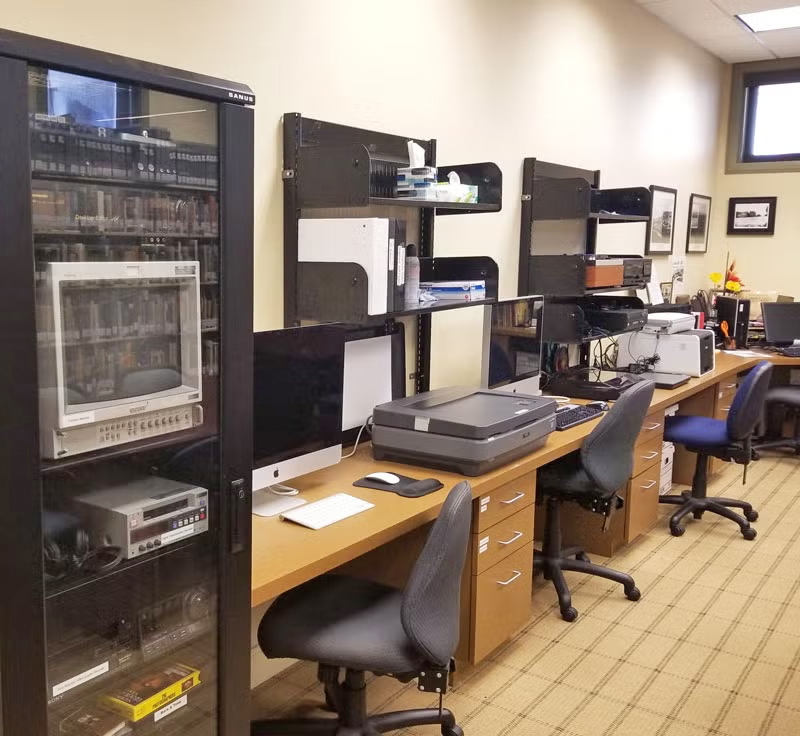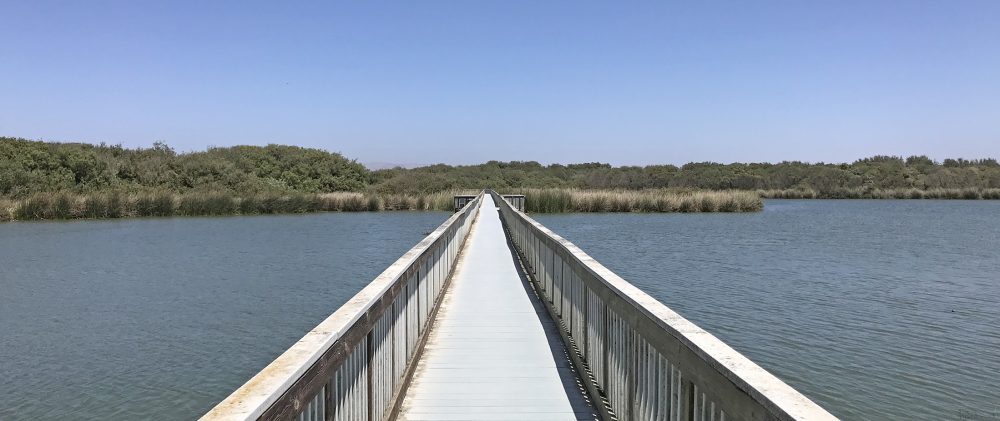The DC Public Library (2024) has become a leader in the field of memory labs, as its trendsetting service “provides equipment for personal archiving of documents, home movies and photographs.” DCPL accepts a wide range of formats for digitization and preservation, including:
- 3.5″ Floppy
- 8mm / Super 8mm film
- Audio cassette
- CDs/DVDs
- DV & DVCAM
- HDV 1080i & MiniDV
- Photos / slides / negatives
- Video8 / Hi8 / Digital8
- VHS & VHS-C
- (DC Public Library, 2024)
Then, “conversions may be saved to a library customer’s cloud storage, external hard drive or USB” (DC Public Library, 2024). DCPL isn’t the only institution blazing a popular path in this area, however. As Hazlett (2018) summarized: “led by DCPL, libraries are helping patrons save their mementos and learn the basics of digital preservation in the process” (p. 26). At most memory labs, patrons are typically able to reserve stations for approximately three hours per session. In addition to user participation, user learning has also been built-in to the delivery of such labs. Hazlett (2018) characterized the idea of memory labs in libraries as an “initial concept of a self-service lab in which library patrons could transfer outdated media to current formats and also learn to catalog and store them properly” (p. 26).

The La Jolla Library Digital Memory Lab provides a trio of workstations to accommodate a variety of formats. (Photo Courtesy of SanDiego.gov for Educational Use)
This module resonated with me because memory labs can enrich not only library collections and the greater online spectrum of digitally available materials (whether for scholarship or simple nostalgic enjoyment) but can also create exciting engagement opportunities. Upon learning to use a memory lab for their own purposes, patrons will then be able to spread the word or even provide ensuing instruction to friends or interested strangers, imparting to them how to best utilize the service. This can then create an educational cycle of people sharing with others and driving others to the library.
Similar programs, such as that of Tulare County Library (2023), require that “users must view [a] Memory Lab Orientation Video before making a reservation” to use the service. Tacoma Public Library Academy (2025) provides a half-hour worth of educational tutorials addressing each respective format. However, from there, the educational journey is driven by the patron’s own curiosity. As DC Public Library (2024) explains of the initiative, “it’s a do-it-yourself (DIY) model, meaning we provide step-by-step instructions, but you control the process from start to finish.”

Cuyahoga County Public Library’s Mandel Memory Lab is an example of the common “do-it-yourself” model where patrons are empowered to learn about digitization and preservation before embarking on respective projects. (Photo Courtesy of CuyahogaLibrary.org for Educational Use)
Hazlett (2018) noted that this type of “DIY model gives patrons online step-by-step instructions on how to use the tools while empowering them to control the entire process” (p. 26). This approach to learning merges participatory thinking, emerging technologies, and user-centered innovation. The idea of a memory lab connects with real-world library service because it’s an example of providing users with an in-demand tool which they can use to preserve and share their own stories. Rather than the misperception of libraries as a linear, Point A-to-Point B, one-way-traffic route of a patron consuming a story offered by the stacks, the patron is now involved in creation of stories through the library, with the library’s assistance and facilitation. As Stephens (2016) noted, this dynamic reflects the evolution of our spirit “ ‘from content providers to engagement developers’ ” (p. 121).
Meanwhile, memory labs also invite infinite-learning opportunities for LIS staff members. For example, participants in the Memory Lab Network Project started a Slack channel to add to collective knowledge associated with the endeavor. Hagan (2019) noted of the Slack channel, “questions are regularly asked and answered for all to learn from … everyone shares experiences and lessons learned along with their documentation, which provides ideas and inspiration to all network members” (p. 42). In ethos, this is similar to the recommendation by Stephens (2016) for LIS pros to “start an exploration blog to chart progress and post each week” (p. 141).

The Tulare County Library Memory Lab is part of the Memory Lab Network. (Photo Courtesy of TulareCountyLibrary.org for Educational Use)
Additionally, learning how to utilize the equipment and software aren’t the only legacies of education forged through memory labs. As Whalen (2020) observed of participating patrons: “Along the way, they’re adding to the historical record stories that have too often been overlooked or dismissed” (p. 41). In this sense, the assumption that libraries are to offer content only to be consumed by a receptive patron is challenged. Invigorating possibilities are sparked for the type of stories that might be preserved and shared through a memory lab. For example, historical information, artistic prints or renderings (e.g., posters, drawings, and paintings) and texts previously unseen yet now in the public domain due to age, or even simply photos of a personal nature or capturing a memory, all can offer meaning and learning opportunities to users, the library itself, and their extended communities.
References
DC Public Library. (2024). Digital preservation (memory lab). https://www.dclibrary.org/using-the-library/digital-preservation-memory-lab
Hagan, S. C. (2019). A web of snowflakes: Meditations on the Memory Lab Network Project. Preservation, Digital Technology & Culture, 48(1), 38–45.
Hazlett, D. R. (2018). The memory lab. Library Journal, 143(6), 26–27.
Stephens, M. (2016). The heart of librarianship: Attentive, positive, and purposeful change. American Library Association.
Tacoma Public Library Academy. (2025). Memory lab at Moore Introduction Orientation. Tacoma Public Library. https://my.nicheacademy.com/tacomalibrary/course/76377
Tulare County Library. (2023). Tulare County Library memory lab. Annie R. Mitchell History Room (Visalia Branch Library). https://www.tularecountylibrary.org/memory-lab
Whalen, L. E. (2020). Uncovering the past: With digitization, libraries bring treasures to light. American Libraries, 51(1/2), 40–44.

Hi Don,
I really enjoyed your post on the Memory Lab concept and execution! One thing I thought particularly thought provoking was in how you focused on it as a self-directed DIY project with supporting instructions, making it more patron-driven and independent. While not necessarily universally applicable, I wonder what other types of projects could benefit from being deploying in such a manner.